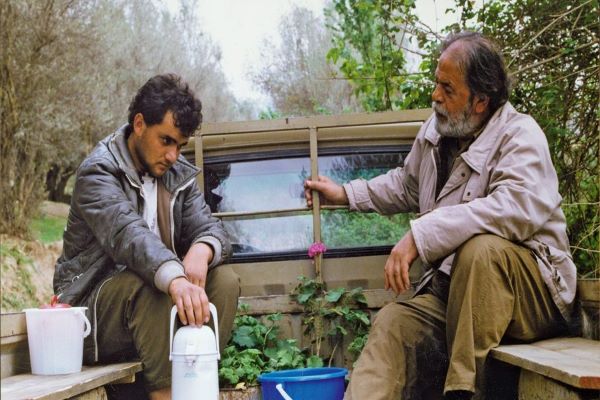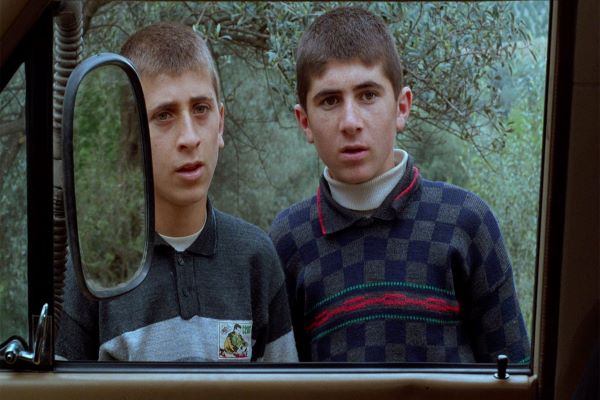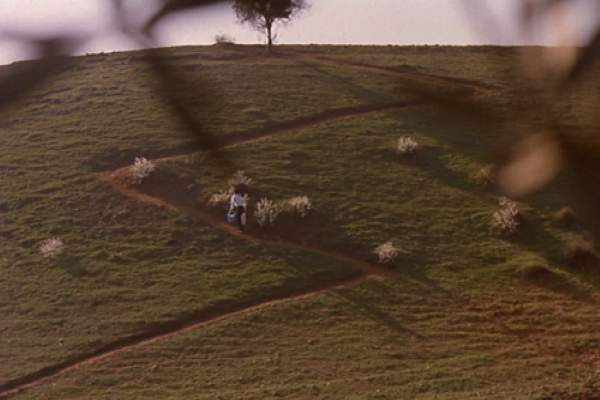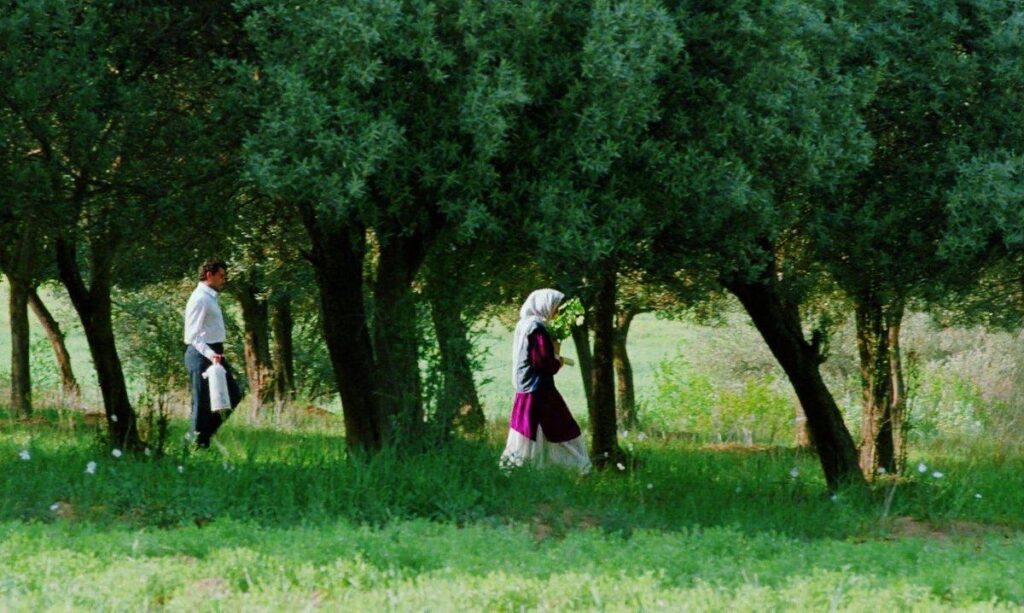Through the Olive Trees is the third and final film of Abbas Kiarostami’s Koker trilogy. Like the other two films of the trilogy – Where Is the Friend’s Home? and Life and Nothing More, this film too is set in the village named Koker in Northern Iran. Like many of his films, Kiarostami portrays the lives of ordinary people in rural Iran through this film. This film is an example of a film-in-the film where a filmmaker who is an alter ego of Kiarostami is in the process of making a film based on a newly married couple who appeared in the second film of the Koker trilogy – Life and Nothing More. Through the Olive Trees features the relentless pursuit of love of a poor illiterate rural Iranian man. This film highlights the issues like class division, social inequality, and economic disparity in post-revolutionary Iran.
The film starts with a filmmaker who is an alter ego of Kiarostami auditioning for the lead actress of his new film. The film is to be set in earthquake-ravaged Koker in Northern Iran. The filmmaker Mohammad Ali keshavarz breaks the fourth wall in the very first scene announcing that he is acting as the director in the film. Multiple girls are auditioned and a fellow girl Tahereh is selected for the role of the leading lady in the film. Mrs. Shiva helps Keshavarz in the selection and filming process. The crew then heads to the filming location.

Filming starts with Tahereh as the female lead and another person as the male lead. The film is based on a newly married couple just after the infamous Manjil-Rudbar earthquake. However, the male lead is replaced as he stammers while having a dialogue with Tahereh. A poor illiterate stonemason Hossein Rezai is selected for the role. Coincidentally, Hossein has been chasing Tahereh for quite some time for marriage. Tahereh lost both of her parents due to the earthquake. She belongs to a higher class and her grandmother has rejected Hossein’s marriage proposal as he is poor, illiterate, and homeless. As Hossein has been cast as the male lead, Tahereh does not deliver her dialogue causing the filming to be postponed.
While boarding a car, Keshavarz comes to know from Hossein that he is relentlessly chasing Tahereh for marriage. Hossein also informs Keshavarz that she has lost both her parents due to the earthquake and her grandmother has rejected his marriage proposal as he is poor, illiterate, and homeless. Keshavarz urges him to marry an illiterate girl. Hossein is not interested to marry an illiterate lady as his future child will not have an educated guardian. The filming process starts again. Tahereh is asked to refer to Hossein as Mr. Hossein, which she does not utter even once. In the breaks, Hossein keeps trying to impress Tahereh but she does not reciprocate any emotion towards Hossein. The filming process comes to an end. As per the advice of Keshavarz, Hossein follows Tahereh running through the Olive trees and the green meadows. In the end, Hossein is seen running back, though Tahereh’s response remains unknown.

Kiarostami’s Through the Olive Trees apparently looks simple and sounds humourous, but actually, it highlights some major issues in Iran. The film shows the helplessness of a poor illiterate rural Iranian man in fixing his marriage with his beloved lady. Hossein is rejected by Tahereh’s family as he is poor, illiterate, and homeless. It shows the social disparity, especially in rural Iran. Hossein argues with Keshavarz that all are equal after the earthquake. Even if it sounds pretty odd, there is no way to deny the misfortunes of both the affected families and Hossein.
If Hossein was born unfortunate, many rich and powerful families have become unfortunate after the earthquake. Kiarostami deliberately does not want to show unfortunate families, but he is as sympathetic to Hussein as he is to the rich and powerful families. He brings forward pity amidst laughter. That is why Through the Olive Trees is a multidimensional film. His love and sympathy reach out to the earthquake-hit families as well as the people from the economically weaker sections of society.

The last scene of Through the Olive Trees has received widespread critical acclaim over time. Audiences are forced to imagine Tahereh’s response to Hossein. Kiarostami has not shown her response vividly in the film. He loves to keep unanswered questions for the audiences to ponder upon. Hossein chasing Tahereh in the midst of the Olive grove is a classic scene in world cinema. Hossein Jafarian’s magnificent cinematography deserves credit. For this film, Kiarostami selected mostly unprofessional actors who delivered praiseworthy performances. Through the Olive Trees was nominated for the prestigious Palme d’Or at the 1994 Cannes Film Festival, and has received widespread critical acclaim over time.
